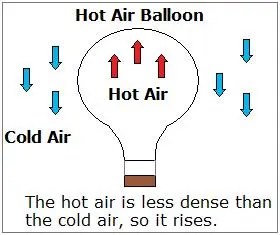[Information based on DipWSET D1 material]

IF all other factors were equal, regions at lower latitudes (nearer the Equator, like Mendoza, South Africa, New South Wales) will receive more solar radiation per annum than regions at higher latitudes (nearer the Poles, like northern France and Germany).” But we know that “all other factors” are not equal are they? Where a vineyard is planted within its give region has more specific influence than just the mere latitude it happens to reside. To make this point, I’m going to be looking at the Northern Hemisphere—specifically cooler climate regions of the Northern Hemisphere. So travel with me, if you will, to your favorite cool climate wine region. (I like Alsace, but whatever you fancy.)
First, let’s talk about altitude. FUN FACT: Temperature falls about 1°F for every 100 meters increase in altitude. So in warmer regions (those closer to the equator) this is beneficial, as lower altitude, valley floor areas would be much too hot to support vine life. Also, I’m going to use a quote from my text here because I don’t know a better way to say this interesting factoid: “Sunshine is more intense at high altitudes than low altitudes because the solar radiation travels through less atmosphere before it reaches these sites. Ultraviolet radiation (radiation with a lower wavelength than visible sunlight) is also greater at higher altitudes.” And both of these things are contributing factors in the promotion of anthocyanin (color) and tannin synthesis. (AKA what makes the red wine red…and tasty.)
Let’s take a look at some cool climate regions as an example. I said Alsace, but you could also think Mosel, Chablis, Burgundy, Upper Loire—heck even the US’s Finger Lakes AVA. What do all of these regions have in common? They are cool, continental climates. This means that those regions have short, hot summers, and cold, often frosty winters because there’s very little transition time between the two extreme temperatures. In these cases the science rule we want to remember is that warm air rises and cold air drops. That’s why most of these regions’ best vineyards are found mid-slope: frost drops down to the valley floor, warm air rises to keep the grapes cozy.
Just as important as where the vine is planted on the slope is what direction the slope is facing—or aspect. In the Northern Hemisphere, vineyards that are south-facing will receive the most sun throughout the day. (If you want to deviate away from the class and think about the Southern Hemisphere, just think opposite—north.) Furthermore, vineyards facing east will receive the benefit of what’s referred to as “morning sun,” the hours of sunshine that will heat up the atmosphere when the air (and soil) temperatures are typically at their lowest leftover from the night. In cold climates like the ones mentioned above, many vineyards are facing south-east to receive full benefit of the heat o’ the sun, thus extending the daily hours photosynthesis is possible and, thus, extending the overall growing season and, consequently allowing grapes to ripen slowly and fully throughout the growing season. (And, eventually, make delicious wine.)
It’s also important to note that the angle of the slope affects how much solar radiation the vine will receive: an increase in slope grade, increases reception.
Further benefits of slope-y planting include shallower, poorer soils and better drainage—basically because of gravity causing these things to run off downward toward the valley floor. (Consequently, valley floor vineyards are typically very fertile with high water holding capacity.) However, this does mean that soil erosion is more prominent and the vine may be at risk for water or nutrient deprivation. Buyer beware.
How did I do? Forget anything? Let me know your thoughts. Thanks again for studying with me!
BriscoeBites officially accepts samples as well as conducts on-site and online interviews. Want to have your wine, winery or tasting room featured? Please visit the Sample Policy page where you can contact me directly. Cheers!
**Please note: all reviews and opinions are my own and are not associated with any of my places of business. I will always state when a wine has been sent as a sample for review. Sending samples for review on my personal website in no way guarantees coverage in any other media outlet I may be currently associated with.**

